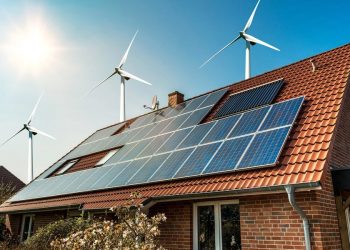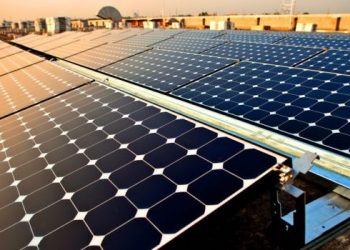The compact fluorescent lamp (CFL) is the most commonly used energy-saving light bulb. The success of light-emitting diodes (LEDs), but for a small household their high costs are generally prohibitive. CFLs provide their customers with significant energy savings. Nevertheless, they have some limitations; for instance, because of their inherent toxicity, some are challenging the health of CFLs.
Most countries have improved their light bulb efficiency standards in an attempt to save electricity and cut carbon emissions. Consumers can choose to substitute obsolete compact fluorescent, LED and halogen bulbs.
Staywired Electrical has firmly developed itself in domestic and commercial Sydney electrician practices as the gold-standard Sydney electric unit. We offer Sydney’s best available electrician. Our Sydney team of electricians are fully qualified and also offer a high level of knowledge in Sydney. And this ensures that you will always be able to turn up on time if you schedule a tour from our Sydney electrician unit. Once we finish the job, we will always be cleaned up and always be competitive for the work done electrically.
Our environment and energy costs need to use light bulbs to save energy. We can understand better how much energy can be generated through small gestures like adjusting the light bulbs. The next time somebody suggests that changing the bulbs won’t save any money, note these figures.
The following are some Pros and Cons of energy savers.
PROS OF ENERGY SAVERS
They Save Energy
Eco-friendly light bulbs produce the same amount of light as incandescent bulbs for just a fraction of the cost. While the wattage statistics will differ from producer to supplier, for halogens, and LED or CFLs, the energy-efficient equivalent of the 100-watt bulb is approximately 70 watts.
This movie had three effects: it is much easier to use, the electricity bill is much smaller, and the carbon footprint has been minimized. The more efficient power transfer into energy at the same time means that LEDs and CFLs do not waste as much heat as other devices.
Dropping Rates
The good news is that LEDs are getting cheaper by year has given the current high costs. In fact, for every decade, their prices drop by a factor of 20. Not only will energy-saving bulbs become cheaper, but they will also increase exponentially, like other electronic equipment, but their efficiency (amount of light per watt power).
Safer Than Most People Think
Nevertheless, research showed that the danger is not almost as great as some indicated while evaluating this safety concern. CFL bulbs need extra care and specific handling procedures, but mercury in a lamp contributes to just one-hundredth of the mercury content in older thermostats, which is just 3 to 5 mg. When it splits, only a small fraction of the mercury is emitted, and the extracted vapor takes some weeks to reach toxic concentrations. Follow the procedure developed to prevent accidents.
The energy-saving benefit in lighting is also that in comparison to energy-saving bulbs and 100% recyclable, it is not harmful elements, such as mercury and other potentially dangerous substances, and helps to reduce carbon dioxide emissions. These contain chemicals that are not environmentally harmful to the color of their light (phosphorus).
Long Service Life
The high initial energy-saving bulbs cost is balanced by the fact that this equipment can afford a significantly larger service life for themselves. CFLs are around ten thousand hours long, while LEDs are serving you 25,000 to fifty thousand hours before they collapse.
A modern bulb growing takes between 1,000 and 2,000 hours for comparison before burning out. Consumers should tend to go much more between bulb adjustments with environmentally friendly lamps.
Wide Color Range
The eco-friendly light bulbs of the first generation did not lure buyers. Why does this happen? Because the output and the light levels were not provided, incandescent bulbs were used instead. Nevertheless, energy-efficient light bulbs quickly became worthy rivals because they were distributed in several shades and fixtures.
CONS OF ENERGY SAVERS
Primarily High Costs
A quick scroll in any energy-saving platform and you’ll see this in nearly any debate. The quality of such lights can indeed be a major drawback. At least in the first place, it may be costly to replace traditional bulbs using energy-efficient counterparts. CFLs scoring Energy Star can cost up to $15 per bulb, unlike the $1 incandescent light bulbs.
Concerns Regarding Health
In the option of newer technologies, LEDs are almost always preferred over CFLs. Why does this happen? Thanks to its design and materials, the compact fluorescent lamp posed safety concerns. Some people argue that a small amount of mercury in any CFL presents a health hazard when the bulb breaks.
Low Cold Temperature Results
The downside of CFL bulbs is true, but not for LEDs. Although compact fluorescent amps in extremely cold environments are difficult to turn on, LEDs turned on automatically. For outdoor lamp, LED lighting–on your porch or in your yard–is preferred.
The lights of diodes rely very highly on the operating temperature in the setting. At high temperatures, the current movement by the semiconductor elements varies and can contribute to the LED module getting burned out. The problem often concerns areas and structures where the weather or conditions are very rapidly rising.
Dimmer Flips Incompatibility
Consumers claimed that the CFL bulbs offered in the shops could not or do not work efficiently with dimmer switches. There is a workaround, however: then, use LED bulbs. They are dimmable in fact; check out LEDs that can be paired with dimmers in the packaging.
CONCLUSION
Power savers produce the same quantity of illumination as light bulbs. But they use less power, as the name suggests and this leads to lower utility costs and lower carbon emissions.
So what’re your needs better? The energy-saving light bulb is the best solution relative to the light bulb given the drawbacks. They’re healthier and effective in oil. The initial costs are always very high so that you won’t change the lighting so often over time. You are generating more money and rising the carbon footprint.








